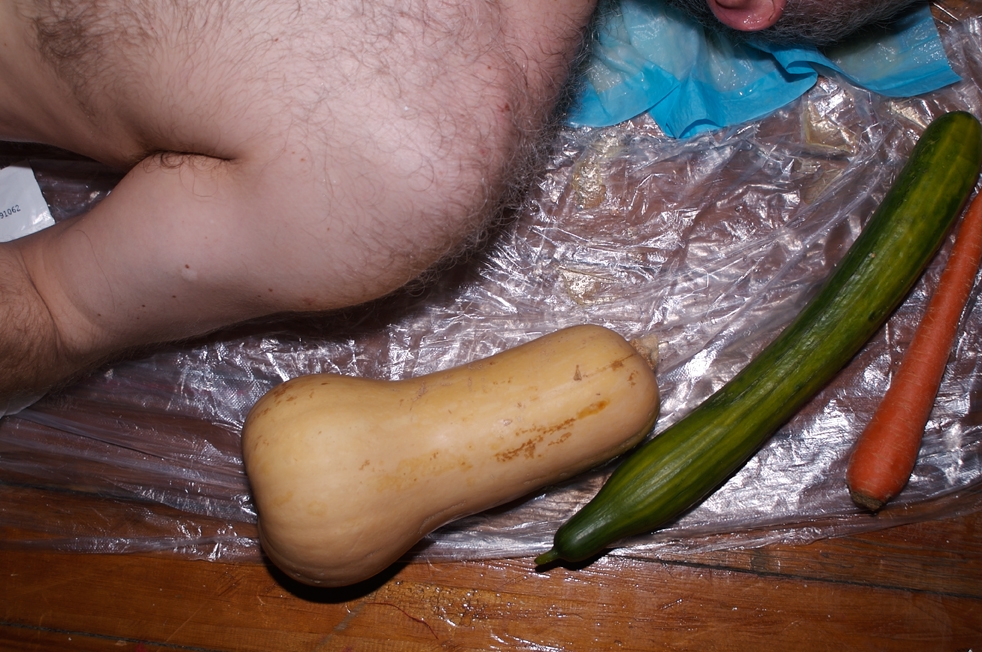At the end of the upper gallery in London’s Somerset House, in the dark-walled final room of the elBulli exhibition (elBulli: Ferran Adrià and the Art of Food, to 29 September), is a fuzzy Polaroid of a white-haired man, slim and bearded, lying prone on a scrubbed steel work surface.
While it has the whiff of a mortuary, this clean, laboratorylike space was the kitchen of Ferran Adrià, who arrived at elBulli in 1984 and made it arguably the most famous restaurant in the world before closing it in 2011; and the white-haired man is Richard Hamilton, who first visited elBulli during the 1960s with Marcel Duchamp and went on to eat there almost annually.
Hamilton was vocal in his admiration for Adrià – in an accompanying video he compares Adrià not only to Duchamp but also to Shakespeare, noting that he had not only invented a new vocabulary but a new grammar as well – an endorsement that likely contributed in no small degree to the Catalan chef’s controversial participation (albeit at a 850km remove) in Documenta 12.
A chef who makes art and a photographer who’s into advanced sexuality – yikes
Hamilton’s conviction that we would all, one day, be speaking Adrià’s language is certainly borne out by creative agency Gestalten’s new survey of global food entrepreneurs, A Delicious Life (2013). Examining, among other things, the new visual culture of food, the volume depicts a global gastronomy ranged between the axes of the neo-rustics (beards, sourdough, forage and artisan charcuterie) and the lab-coated ludics (flavoured smoke, odd geometry, spume, smears and powders), both of which owe a debt of influence to the Catalan master.
A Delicious Life concludes with an entry on Cook It Raw, the world’s most exclusive culinary club, in which leading avant-garde chefs learn from indigenous culinary practices and heritage ingredients.
Led by culinary innovators including Adrià’s brother and cochef, Albert, Cook It Raw (founded in 2009) is the perfect resolution of the rustic, ludic and scientific tendencies. The aim is to evolve advanced culinary culture by strengthening links with tradition and a global sense of terroir.
As a contribution to visual culture, however, it often appears more like an exercise in depicting the uneatable. One memorable dish, Pollution – 20.30 Modena (2009), by Massimo Bottura, resembled a fetid pond of black water complete with spume of a compellingly gastric consistency; another occupied a white dish decorated with fresh (one assumes bona fide) bloody fingerprints.
For rarefied outfits like elBulli and Cook It Raw, visual representation is the only way that anyone beyond the few thousand (or in the case of Cook It Raw, few dozen) actual diners could experience their creativity. Dishes at elBulli were obsessively documented, and disseminated as image.
Concomitant with this super-elitist look-but-don’t-taste foodie culture arose a growing obsession with the documentation of the plate. Competing with comic cats and ‘glamour’ shots, food pictures have bloomed like yeast across social media platforms; in the space of five years, the term ‘sharing a meal’ has developed an entirely new meaning.
The Instagrammed Scotch egg may be gastronomically polar from the luscious depictions of haute cuisine from elBulli, but they are siblings in the new visual culture of food – or rather in a culture of food that prioritises the visual.
New York-based photographer Natasha Gornik is a passionate advocate of advanced sexuality, rather as the avant-garde chefs are passionate advocates of advanced gastronomy. Her work focuses on the sticky end of the city’s BDSM lifestyle – plump buttocks bearing angry lacerations, cloth-pegged scrota and lovingly regimented batteries of props and tools.
As with the Cook It Raw creations, only a rare few will get (or want) the physical experience, but many, many more will enjoy the visuals. The BDSM images are Gornik’s ‘public’ work: they’re what go into the galleries. Her ‘personal’ photographs, by contrast, are almost all of food. Her blog carries immaculate depictions of her meals and kitchen paraphernalia, alongside explicit texts discussing sex parties that she’s attended or what (and who) she’s done before dining.
Gornik comfortably relates food and sexuality – she describes the ‘tease’ of a restaurant and the importance of taking a moment to be a ‘voyeur’ once the plate arrives, as well as the parallel acts of consummation. But exhibiting straight-up food photographs doesn’t interest her – as she notes, so many people photograph food that it’s no longer something new. The art of the plate, it seems, has already become hopelessly vanilla.
This article was first published in the September 2013 issue.
